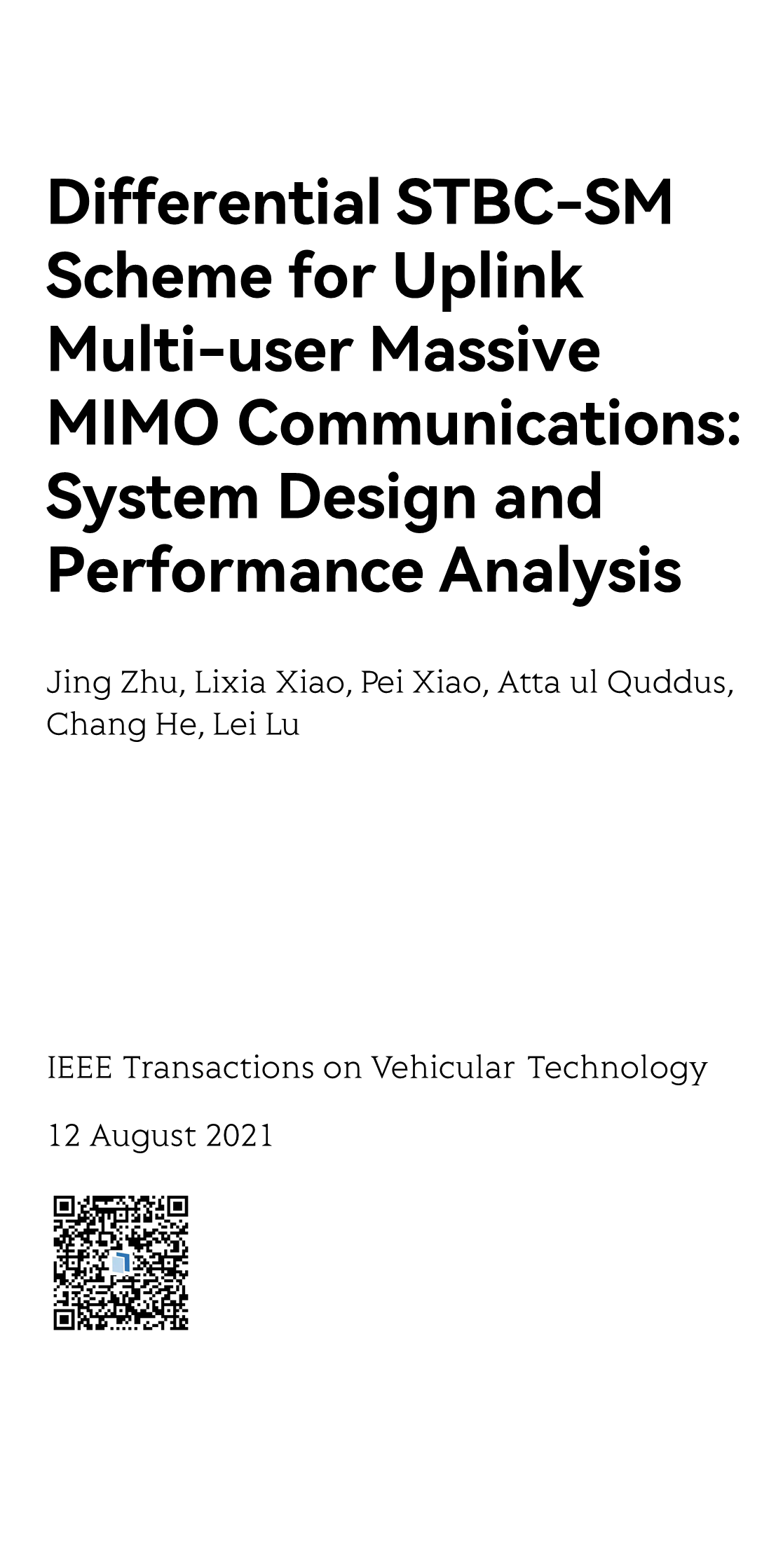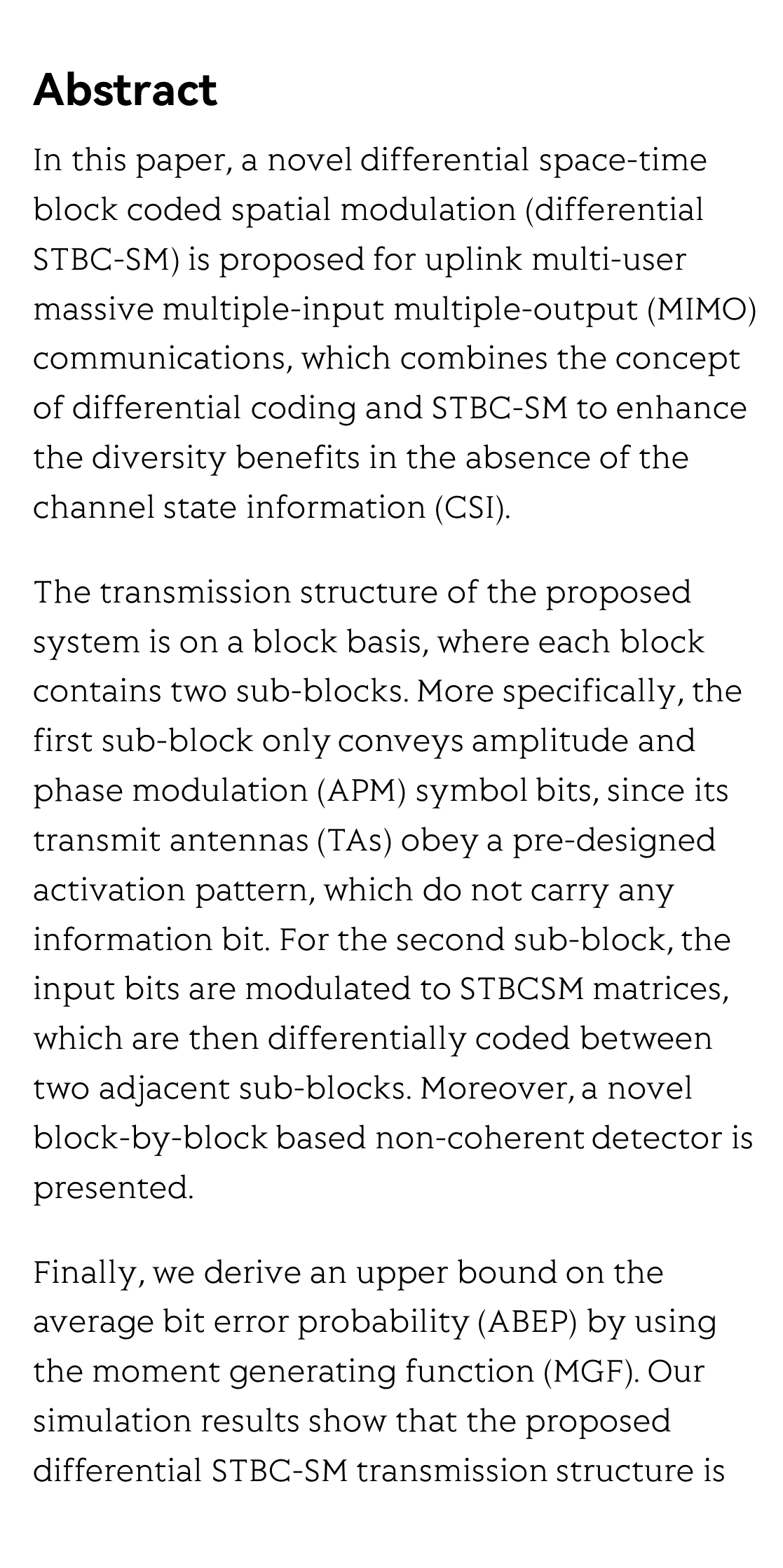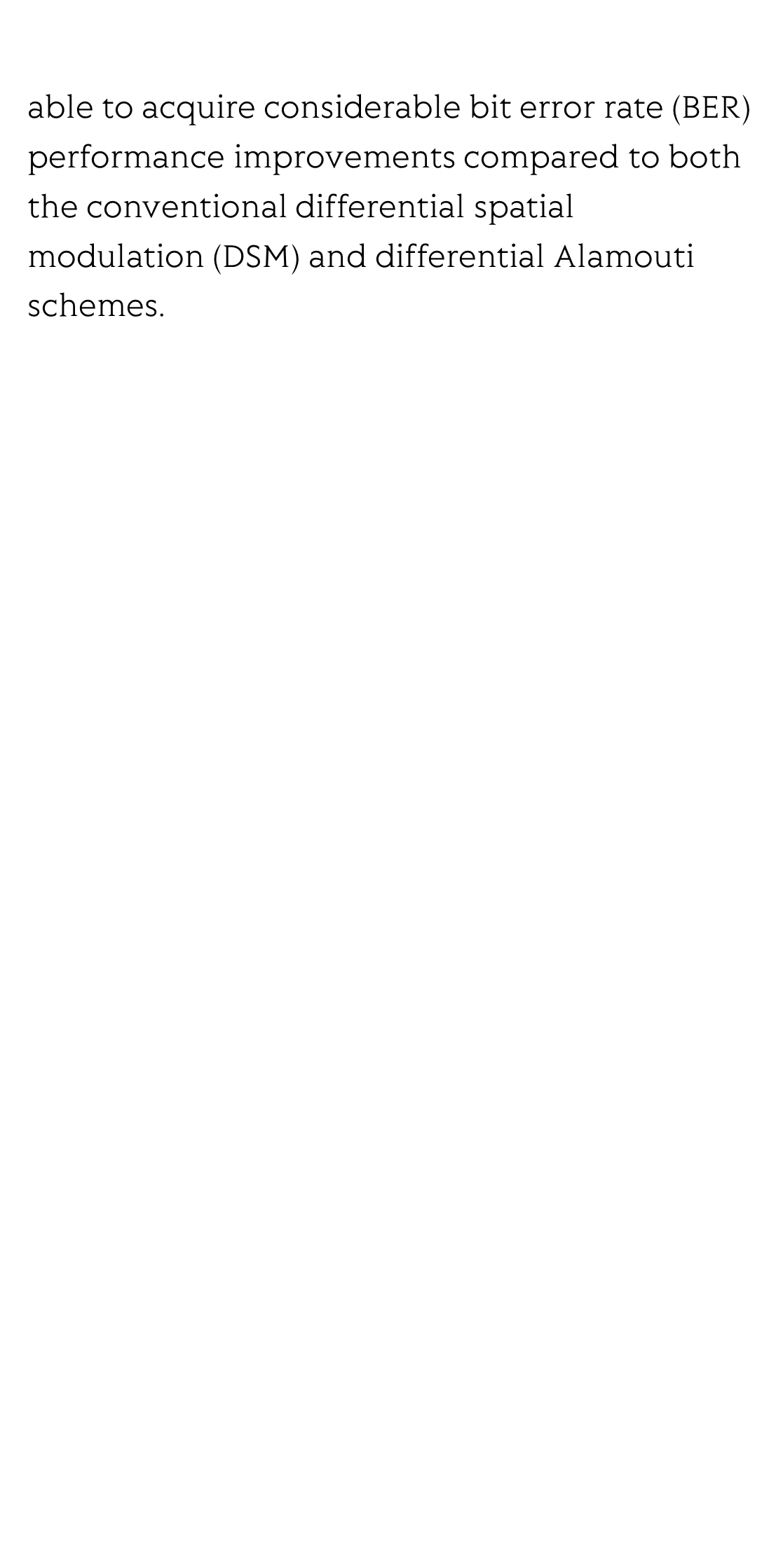(Peer-Reviewed) Differential STBC-SM Scheme for Uplink Multi-user Massive MIMO Communications: System Design and Performance Analysis
Jing Zhu ¹, Lixia Xiao 肖丽霞 ², Pei Xiao 肖培 ³, Atta ul Quddus ⁴, Chang He ⁵, Lei Lu ⁶
¹ Guild, Surrey, United Kingdom of Great Britain and Northern Ireland
² Wuhan National Laboratory for Optoelectronics, Huazhong University of Science and Technology, 12443 Wuhan, Hubei, China, 430074
中国 湖北 武汉 华中科技大学武汉光电国家实验室
³ Faculty of Engineering & Physical Sciences, University of Surrey, Guildford, Surrey, United Kingdom of Great Britain and Northern Ireland, GU2 7XH
⁴ CCSR (Centre for Communication Systems Research), University of Surrey, Guildford, Surrey, United Kingdom of Great Britain and Northern Ireland, GU2 7XH
⁵ Shanghai 上海
⁶ Wireless Network RAN Research Department, Shanghai Huawei Technologies, Shanghai, Shanghai, China
中国 上海 上海华为技术有限公司无线网络研究部
IEEE Transactions on Vehicular Technology
, 2021-08-12
Abstract
In this paper, a novel differential space-time block coded spatial modulation (differential STBC-SM) is proposed for uplink multi-user massive multiple-input multiple-output (MIMO) communications, which combines the concept of differential coding and STBC-SM to enhance the diversity benefits in the absence of the channel state information (CSI).
The transmission structure of the proposed system is on a block basis, where each block contains two sub-blocks. More specifically, the first sub-block only conveys amplitude and phase modulation (APM) symbol bits, since its transmit antennas (TAs) obey a pre-designed activation pattern, which do not carry any information bit. For the second sub-block, the input bits are modulated to STBCSM matrices, which are then differentially coded between two adjacent sub-blocks. Moreover, a novel block-by-block based non-coherent detector is presented.
Finally, we derive an upper bound on the average bit error probability (ABEP) by using the moment generating function (MGF). Our simulation results show that the proposed differential STBC-SM transmission structure is able to acquire considerable bit error rate (BER) performance improvements compared to both the conventional differential spatial modulation (DSM) and differential Alamouti schemes.
Flicker minimization in power-saving displays enabled by measurement of difference in flexoelectric coefficients and displacement-current in positive dielectric anisotropy liquid crystals
Junho Jung, HaYoung Jung, GyuRi Choi, HanByeol Park, Sun-Mi Park, Ki-Sun Kwon, Heui-Seok Jin, Dong-Jin Lee, Hoon Jeong, JeongKi Park, Byeong Koo Kim, Seung Hee Lee, MinSu Kim
Opto-Electronic Advances
2025-09-25
Dual-frequency angular-multiplexed fringe projection profilometry with deep learning: breaking hardware limits for ultra-high-speed 3D imaging
Wenwu Chen, Yifan Liu, Shijie Feng, Wei Yin, Jiaming Qian, Yixuan Li, Hang Zhang, Maciej Trusiak, Malgorzata Kujawinska, Qian Chen, Chao Zuo
Opto-Electronic Advances
2025-09-25





